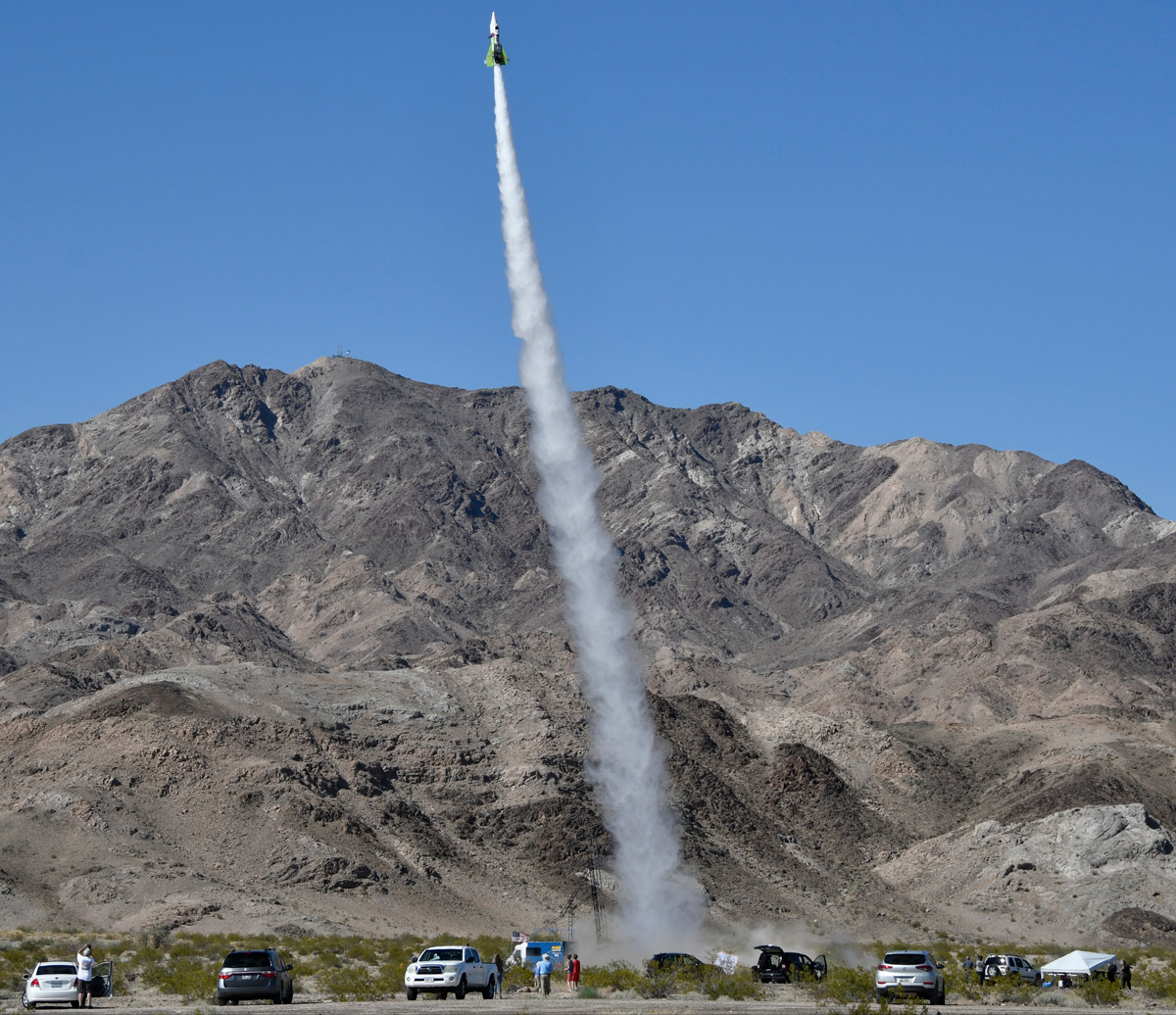Flat-Earther Blasts Himself into the Sky on Homemade Rocket (and He Survives)

A flat-Earth conspiracy theorist named Mike Hughes finally lifted off our spherical planet's surface into the skies aboard a self-made, steam-powered rocket Saturday (March 24).
"Mad" Mike believes, of course mistakenly, that the Earth is flat, and his plan since November 2017 has been to launch himself upwards of 1,800 feet, with the goal of making it high enough to prove the planet's flatness, though that's down the line, he has said.
In a video by Noize TV (which contains explicit language) yesterday, Hughes is seen stepping into the top cone of the rocket, with his helmet-covered head facing the heavens, the desert mountains in the background. The rocket was nestled into scaffolding attached to Hughes' "Flat Earth" plastered truck.
The launch comes after two failed attempts — one was canceled after the Bureau of Land Management caught wind of his plans to shoot the rocket from public lands and promptly shut him down; and in another attempt on Feb. 3, the flat-Earther's rocket never left the pad (on private land). (Noise TV livestreamed the painful-to-watch 11-minute event.)
This time, Hughes, a 61-year-old limo driver, crafted a ramp from a mobile home so that he could launch from a vertical angle that would allow him to return to Earth on private land owned by Albert Okura. In Saturday's success, the rocket took off straight into the air, reaching 1,875 feet (572 meters) above the Mojave Desert near Amboy, California, before making a "hard landing which sheared off the nose cone," he posted on his Facebook page.
The cone, with Hughes inside, fell back to Earth attached to a parachute. He was dropping at 350 mph (560 km/h) before pulling his parachute; that wasn't enough to slow him to a reasonable speed, and so Hughes had to pull a second parachute before crashing into the desert, as seen in the Noize TV livestream.
Upon landing, he told the Associated Press that aside from an aching back, he was fine, and "relieved," adding "I'm tired of people saying I chickened out and didn't build a rocket. I'm tired of that stuff. I manned up and did it."
Sign up for the Live Science daily newsletter now
Get the world’s most fascinating discoveries delivered straight to your inbox.
The mission looked like it was going to be aborted, due to the high winds and the fact that his rocket was losing steam. As reported by the AP, for maximum thrust, the steam pressure should reach 350 psi and before the launch, it was dropping to 340 psi.
"I told Mike we could try to keep charging it up and get it hotter," said Waldo Stakes, who was helping Hughes with the mission. "He said, 'No,'" the AP reported.
His ultimate goal? Hughes reportedly wants to build what he's calling a Rockoon, or a rocket that hitches a ride into the air aboard a gas-filled balloon. The rocket would then separate and take Hughes to an altitude of 68 miles (110 kilometers), where he could then take pictures to prove the flatness of the Earth, according to the AP. One can see Earth's curvature starting at an altitude of about 6.6 miles, or 35,000 feet (10,700 m).
"Do I believe the Earth is shaped like a Frisbee? I believe it is," he said in an earlier video posted to his Facebook page. "Do I know for sure? No. That's why I want to go up in space."
Of course, there are plenty of ways to prove the Earth is a sphere without launching oneself into space, as Live Science has laid out previously.
Originally published on Live Science.
Jeanna Bryner is managing editor of Scientific American. Previously she was editor in chief of Live Science and, prior to that, an editor at Scholastic's Science World magazine. Bryner has an English degree from Salisbury University, a master's degree in biogeochemistry and environmental sciences from the University of Maryland and a graduate science journalism degree from New York University. She has worked as a biologist in Florida, where she monitored wetlands and did field surveys for endangered species, including the gorgeous Florida Scrub Jay. She also received an ocean sciences journalism fellowship from the Woods Hole Oceanographic Institution. She is a firm believer that science is for everyone and that just about everything can be viewed through the lens of science.










